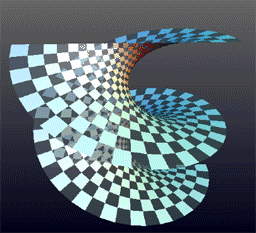I've heard it said that if two surfaces have the same first fundamental form, or if they're locally isometric, then they "behave metrically in the same way", or variants on that theme. The textbook I'm reading says that it's "intuitively clear" that the cylinder is isometric to the plane, because "by cutting a cylinder along a generator we may unroll it onto part of a plane". Well, couldn't I do something similar to cut and flatten out any surface onto a plane?
What is the geometric meaning of the existence or non-existence of a local isometry?

Best Answer
Of course we all know that a cylindrical surface can be unrolled onto a plane, hence is locally isometric to the euclidean plane ${\mathbb E}^2$. If differential geometry would not confirm this fact we would have given it up long ago.
But it is something different with a $2$-sphere: You cannot map it locally isometrically to ${\mathbb E}^2$. In order to prove this "geometrically" (i.e., without setting up a heavy differential geometric apparatus) we have to produce a certain invariant which is different for $S^2$ and ${\mathbb E}^2$. Such an invariant is, e.g., the circumference of a circle of radius $0<r\ll 1$. In ${\mathbb E}^2$ this circumference is $2\pi r$, but on a sphere of radius $1$ it is $2\pi\sin r$, whereby we measure $r$ as length of a geodesic arc on $S^2$. This discrepancy shows that it is impossible to map $S^2$ isometrically to ${\mathbb E}^2$ even locally.